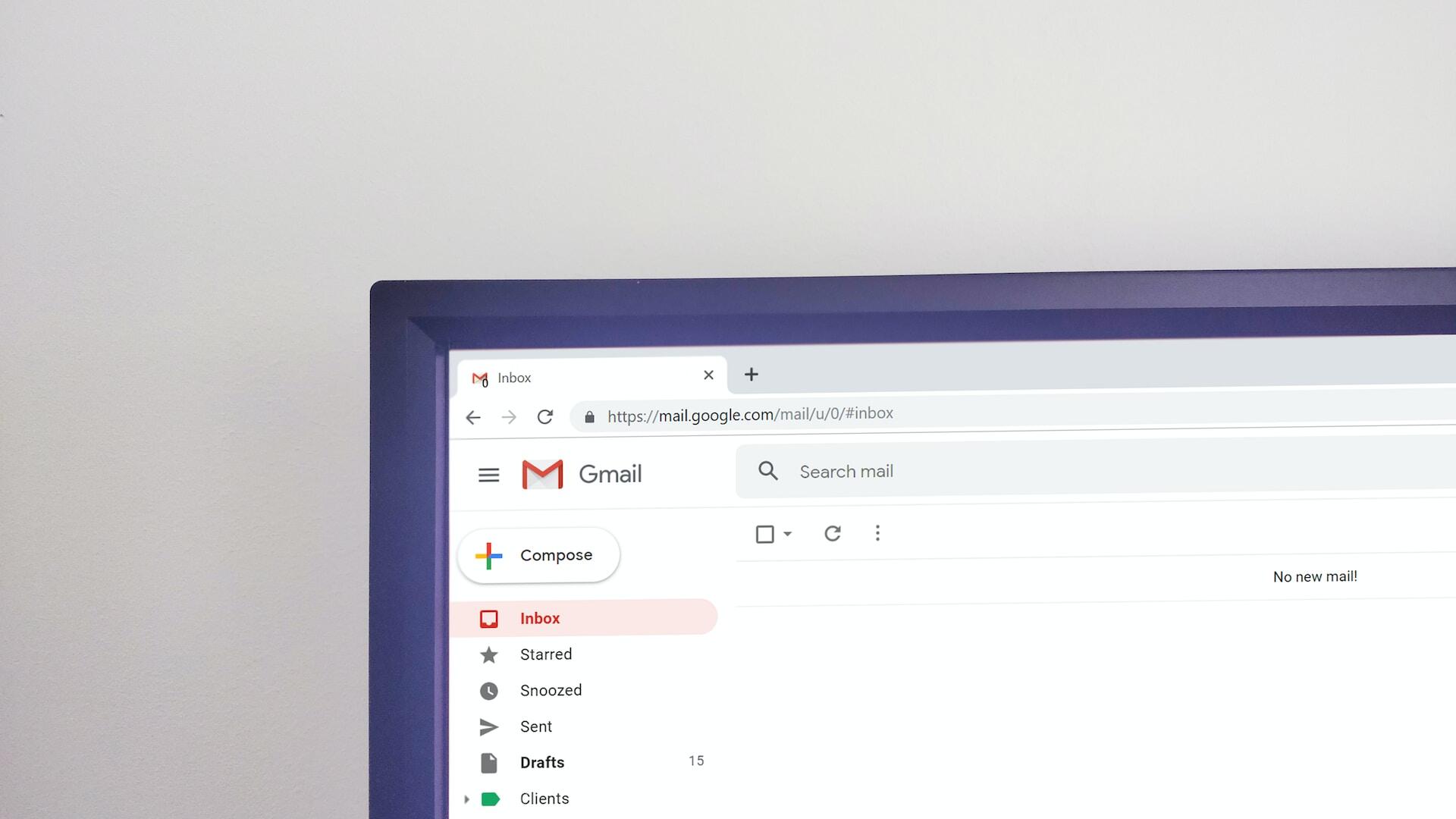As a sales manager, one of the key components to directing your team's success is understanding and implementing a well-structured sales cadence. This process not only ensures a consistent and reliable communication plan with your prospects but also provides clarity and direction to your sales team. But what exactly is sales cadence, and why is it crucial to your sales operation? Let's dive in.
What is a Sales Cadence? A Brief Overview for Sales Managers and Leaders

In simple terms, sales cadence refers to the sequence and timing of various sales activities or touchpoints that your sales team initiates with prospects. This includes emails, calls, social media interactions, and face-to-face meetings. It outlines when and how frequently these interactions should happen, and often follows a prospect's journey from the top to the bottom of the sales funnel. A well-planned sales cadence ensures no prospect is neglected and helps to keep your sales team organized and efficient.
Why is Sales Cadence Important?
- Enhanced Customer Engagement: By following a well-structured cadence, your team can maintain regular contact with prospects, thereby enhancing engagement and establishing a strong relationship.
- Consistency: A well-defined sales cadence ensures consistency in your team's efforts, which builds trust with prospects and avoids missed opportunities.
- Efficiency: With a proper sales cadence in place, your sales reps can manage their time better and work more efficiently.
-
Measurement and Improvement: A formal sales cadence allows managers to measure results and fine-tune their process based on performance and feedback.
Key Elements of a Sales Cadence
- Contact methods: These can include phone calls, emails, social media, or in-person meetings.
- Frequency: How often your sales team contacts a prospect.
- Duration: How long the sales cycle lasts, from the first point of contact to closing.
- Content: What message you are delivering to the prospect.
-
Spacing: The time interval between each contact.
Understanding and applying a strategic sales cadence is an essential part of leading a successful sales team. By taking the time to craft a cadence that suits your team and your prospects, you can improve engagement, consistency, efficiency, and ultimately, your sales results. In the upcoming sections, we will delve deeper into the specifics of setting up an effective sales cadence and how you can tailor it to your unique needs.
Determining the Ideal Timing: When to Add Prospects to a Sales Cadence
Orchestrating the timing of adding prospects to your sales cadence is pivotal in shaping your team's sales strategies. A well-timed introduction of a prospect into your sales process can set the stage for a fruitful interaction, build trust, and eventually lead to a successful conversion. But when is the perfect moment to introduce a prospect into your sales cadence?
Identifying the Right Time
The decision to incorporate a prospect into your sales cadence can be influenced by several factors:
1. Lead Warmth:
The readiness of a prospect to be sold to — in other words, the 'warmth' of the lead — is a critical factor. Hot leads, like those who've actively engaged with your content or filled out a 'Contact Us' form, should be added to your sales cadence immediately. For colder leads, a warming-up period with nurturing content may be beneficial before adding them to the cadence.
2. Initial Contact:
For outbound sales, a prospect can be added to the cadence as soon as the initial contact has been made. This ensures consistent follow-ups and keeps your business top of mind.
3. Sales Funnel Stage:
The stage at which a prospect is in the sales funnel can help determine when they should be added to the sales cadence. For instance, prospects who are in the awareness stage and have just discovered your product or service might need more nurturing before being added.
Balancing Persistence and Pressure
One challenge sales professionals often face is finding the balance between being persistent and exerting too much pressure on a prospect. It's essential to respect your prospect's space while ensuring your product or service remains front-of-mind. Regular, value-added interactions can help build trust and relationship, setting the stage for a successful sale.
Customizing Your Approach
Every prospect's journey is unique. As such, salespeople or SDRs should be flexible in adjusting their sales cadence to match individual prospects' needs and preferences. Regular analysis of engagement data can provide insights into optimal timing and frequency of interactions for each prospect.
Understanding the ideal timing to incorporate prospects into your sales cadence can significantly boost your team's effectiveness and efficiency. In the upcoming sections, we will explore various sales cadence examples and how to create effective sales cadences for your team.
Examples of Cadence Flows in Sales: Practical Approaches to Nurturing Prospects

A well-crafted sales cadence is a powerful tool for moving prospects through your sales pipeline. By implementing a strategic sequence of interactions, you can maintain engagement, foster trust, and ultimately drive conversions. To illustrate, let's examine a few practical examples of sales cadence flows.
Example 1: A Basic Email-Based Cadence
For many businesses, email serves as the backbone of their sales cadence. Here's a simple 6-step email-based cadence that might be employed over two weeks:
- Day 1: Send an introductory email outlining your value proposition.
- Day 3: Follow up with an email that provides useful industry insights or resources.
- Day 6: Send a case study showing how your product or service has helped similar companies.
- Day 9: Share a personal story or testimonial.
- Day 12: Offer a demo or free consultation.
- Day 14: Send a final follow-up email summarizing the value you offer and asking for a response.
Example 2: A Multi-Channel Sales Cadence
A more complex sales cadence might involve multiple channels of communication. Here's an example of a 7-step, multi-channel cadence that could be utilized over three weeks:
- Day 1: Send an introductory email explaining your value proposition.
- Day 3: Follow up with a phone call. If you don't get through, leave a voicemail.
- Day 7: Send a LinkedIn message providing valuable content or insights.
- Day 10: Follow up with another phone call and voicemail.
- Day 14: Send another email, perhaps offering a case study or testimonial.
- Day 17: Reach out through social media with personalized content.
- Day 21: Make a final call and send a final email summarizing your offer and next steps.
Example 3: An Intensive Outbound Cadence
For businesses focusing on outbound sales, a more intensive cadence may be appropriate. Here's a potential 5-step cadence that could take place over a week:
- Day 1: Begin with a cold call introducing your product or service.
- Day 2: Send a follow-up email summarizing the call and providing more details about your offering.
- Day 3: Connect on LinkedIn and share valuable content.
- Day 5: Make a second call to further discuss your product or service.
- Day 7: Send a final email outlining next steps and asking for a meeting or demo.
Example 4: Enterprise Sales Cadence
Enterprises typically deal with longer sales cycles and higher ticket items, requiring a more personalized and drawn-out approach. Here's a potential 8-step cadence for an enterprise:
- Day 1: Send a personalized email introducing your company and product or service.
- Day 3: Follow up with a phone call, attempt to learn more about the prospect's needs and challenges.
- Day 7: Send an email sharing a case study or whitepaper relevant to the prospect's industry.
- Day 10: Attempt another phone call, propose a custom solution based on the prospect's needs.
- Day 14: Invite the prospect to a personalized product demonstration or webinar.
- Day 21: Send a follow-up email summarizing the demo and reinforcing the value proposition.
- Day 28: Make a third phone call to discuss potential next steps and close the deal.
- Day 35: Send a final email outlining contract details, pricing, and next steps.
Example 5: Startup Sales Cadence
Startups, on the other hand, might need a more aggressive and multi-channel cadence to gain attention and stand out in the market. Here's a potential 6-step cadence for a startup:
- Day 1: Send an introductory email outlining the innovative features of your product or service.
- Day 2: Connect with the prospect on LinkedIn and share a piece of engaging content or insight.
- Day 4: Follow up with a phone call to explain your product's unique value proposition.
- Day 6: Send an email offering a free trial or discount on your product or service.
- Day 8: Follow up with another phone call to answer any questions or objections.
- Day 10: Send a final email emphasizing your unique selling points and asking for a decision.
Remember, these are just examples. The most effective cadence will depend on your specific circumstances and the needs and preferences of your prospects. Keep refining and adjusting your cadence based on feedback and results.
Best Tools to Build a Perfect Sales Cadence
Creating an effective sales cadence is crucial for nurturing leads and driving conversions. Thankfully, several robust tools can help you design, implement, and monitor your sales cadence. Here's a look at some of the best.
1. Salesforce
Salesforce, a well known CRM platform, offers the High Velocity Sales module. It's a suite of tools designed specifically for inside sales teams.
- Sales Cadences and Work Queues: Allows you to create customized sales cadences, specifying the sequence and timing of interactions. Also, it automatically prioritizes tasks in a work queue.
- Einstein Lead Scoring: Uses AI to score leads based on their likelihood to convert, helping you prioritize your outreach.
- Einstein Activity Capture and Analytics: Automatically captures and analyzes sales activity data, providing insights into cadence performance.
2. HubSpot
HubSpot's Sales Hub, if implemented, includes the Sequences tool, which automates your sales cadence. Here's why it stands out:
- Sequences: Allows you to create personalized email sequences that are automatically delivered at the optimal time.
- Email Templates: Lets you create and save email templates, which can be personalized with contact information.
- Workflow Automation: Can automatically enroll contacts into sequences based on criteria like lead score or interaction history.
- Tracking and Analytics: Provides insights into sequence performance, including open and click-through rates.
3. Outreach
Outreach is a sales engagement platform that offers a suite of tools for managing sales cadences.
- Sequences: Allows you to create multi-channel cadences incorporating email, phone calls, and social touches.
- Sales Intelligence: Uses AI to provide insights and recommendations for optimizing your cadences.
- A/B Testing: Lets you test different versions of your cadences to see which is most effective.
4. InsideSales.com Playbooks
Playbooks from InsideSales.com (now XANT) offers sales cadence tools that integrate with your existing CRM.
- Playbooks: Lets you create multi-channel cadences with email, phone, and social touches.
- NeuralSend: Uses AI to determine the optimal time to send emails to each prospect.
- A/B Testing: Allows you to test and compare different cadence strategies.
Crafting the Perfect Sales Email: Tips for Your Sales Cadence

Sales emails are an integral part of any sales cadence. Crafting the perfect sales email requires a blend of personalization, relevancy, and clear call-to-action. Here are some tips to guide you, along with personalized examples:
1. Start with a Strong Subject Line
The subject line is your first chance to grab the recipient's attention. It should be compelling, personalized, and give an idea of what to expect in the email. Keep it short and intriguing.
Example: "John, streamline your IT processes with our new AI tool"
2. Personalize the Introduction
The introduction should feel personal. Address the recipient by name, and if possible, reference a relevant detail about their company or industry. This shows you've done your homework and aren't just sending a mass email.
Example: "Hi John, I noticed that your company, XYZ Tech, recently expanded its IT department..."
3. Connect to a Pain Point or Goal
After the introduction, address a specific pain point or goal that's relevant to the prospect. This will show that you understand their needs and can provide a solution.
Example: "Expanding IT teams often struggle with managing increased workload and maintaining efficiency, which is where our AI tool can help."
4. Highlight Your Value Proposition
Briefly explain what makes your product or service unique and how it can benefit the prospect. Avoid jargon and keep your language clear and straightforward.
Example: "Our AI tool automates routine IT tasks, allowing your team to focus on strategic projects and boosting overall productivity."
5. Include Social Proof
Social proof, like a testimonial or case study, can boost your credibility and reassure the prospect that others have found value in your offering.
Example: "ABC Company, similar in size to XYZ Tech, increased their IT efficiency by 30% within the first month of using our AI tool."
6. End with a Clear Call to Action
Finally, your email should conclude with a clear, concise call to action. This might be scheduling a call, signing up for a demo, or simply replying to the email.
Example: "John, I'd love to show you how our AI tool can boost XYZ Tech's productivity. Can we schedule a call next week to discuss this further?"
Remember, personalization is key. Tailor each email to the recipient as much as possible, focusing on their specific needs and how you can meet them. Also, be sure to track and analyze your email performance so you can continue to refine and improve your strategy.
Sales Cadence Reporting: Key Metrics and Reports for Managers
Sales cadence reporting is an essential practice for managers seeking to optimize their team's performance. By analyzing key metrics and leveraging specific reports, managers can gain a comprehensive understanding of their sales cadence's effectiveness. Here's a deeper dive into the essential aspects of sales cadence reporting.
Key Metrics
The most effective sales cadence reports include a range of key metrics that collectively paint a picture of your sales efforts. Here are a few you should consider:
- Cadence Adherence: This metric tells you what percentage of your sales team is following the prescribed sales cadence. Adherence to the cadence is crucial for ensuring consistent sales efforts and accurate data for analysis.
- Response Rate: This measures the percentage of prospects that respond to your outreach efforts, whether via email, phone, social media, etc.
- Engagement Rate: Beyond mere responses, the engagement rate measures the depth of interaction a prospect has with your sales content. This might include email click-through rates, content downloads, webinar attendance, etc.
- Conversion Rate: This metric reflects the percentage of prospects that advance from one stage of the sales process to the next, ultimately leading to a closed deal.
- Sales Cycle Length: This measures the average amount of time it takes for a prospect to move through the sales process.
Types of Reports
Several types of reports can provide valuable insights into these metrics and your sales cadence more broadly.
- Cadence Performance Report: This report provides an overview of the performance of a specific sales cadence, including adherence rate, response rate, engagement rate, and conversion rate.
- Sales Activity Report: This breaks down the activities of your sales team, including the number of emails sent, calls made, meetings scheduled, etc. This can be useful for identifying bottlenecks or areas for improvement in your cadence.
- Sales Progression Report: This report shows how prospects are moving through the sales funnel. It can help identify stages where prospects are getting stuck or dropping off.
- Sales Outcome Report: This report provides a summary of the sales results achieved during a specific period, such as the number of deals closed, revenue generated, etc.
Analyzing and Using the Reports
Once you have these reports, it's crucial to analyze the data and use it to optimize your sales cadence. Look for patterns or trends, such as low response rates to emails sent at a certain time or high conversion rates following a particular type of outreach. Use these insights to refine your sales cadence, and continue to monitor and adjust as necessary.
Remember, effective reporting is a continuous process, not a one-time task. Regularly reviewing and acting upon these reports will enable you to adapt to changing circumstances and consistently improve your sales results.
Final Thoughts: Perfecting Your Sales Cadence Journey
As we've explored in this guide, building an effective sales cadence is a blend of art and science. It's a strategic journey that revolves around understanding your prospects, their unique needs, and how your products or services align with these needs.
Each prospect is unique, and a sales cadence should respect this individuality. Knowing when and how often to contact prospects, creating personalized communications, all contribute to a sales cadence that is not only effective but also respectful and customer-centric.
Remember, tracking and reporting are not just administrative tasks. They provide the valuable insights that drive decision-making, helping sales managers identify what's working, what isn't, and where there's room for improvement.
Sales cadences are dynamic, not static. They should evolve and adapt based on your prospects' responses, industry trends, and internal business changes. Keep refining your approach, exploring new strategies, and never stop testing.
Thank you for joining us on this journey to perfect your sales cadence. Keep exploring, keep learning, and keep optimizing. The world of sales is one of constant change, and staying ahead requires continual adaptation. Happy selling!




